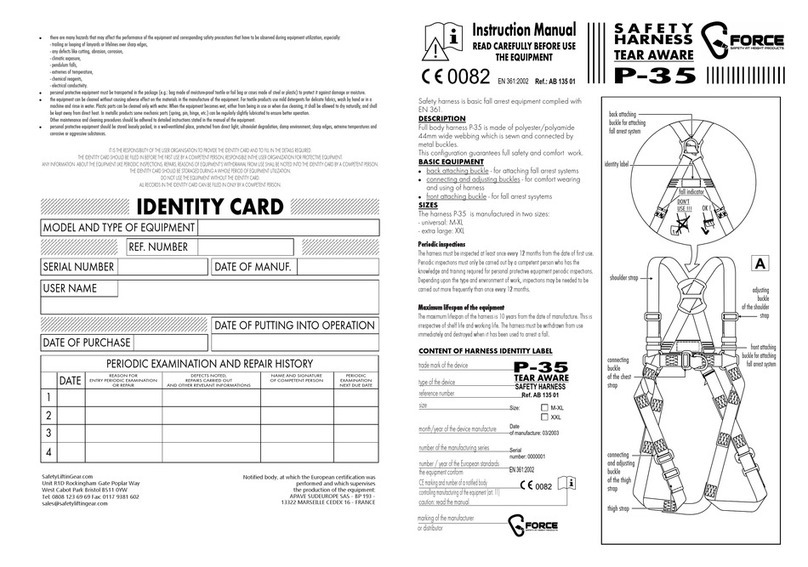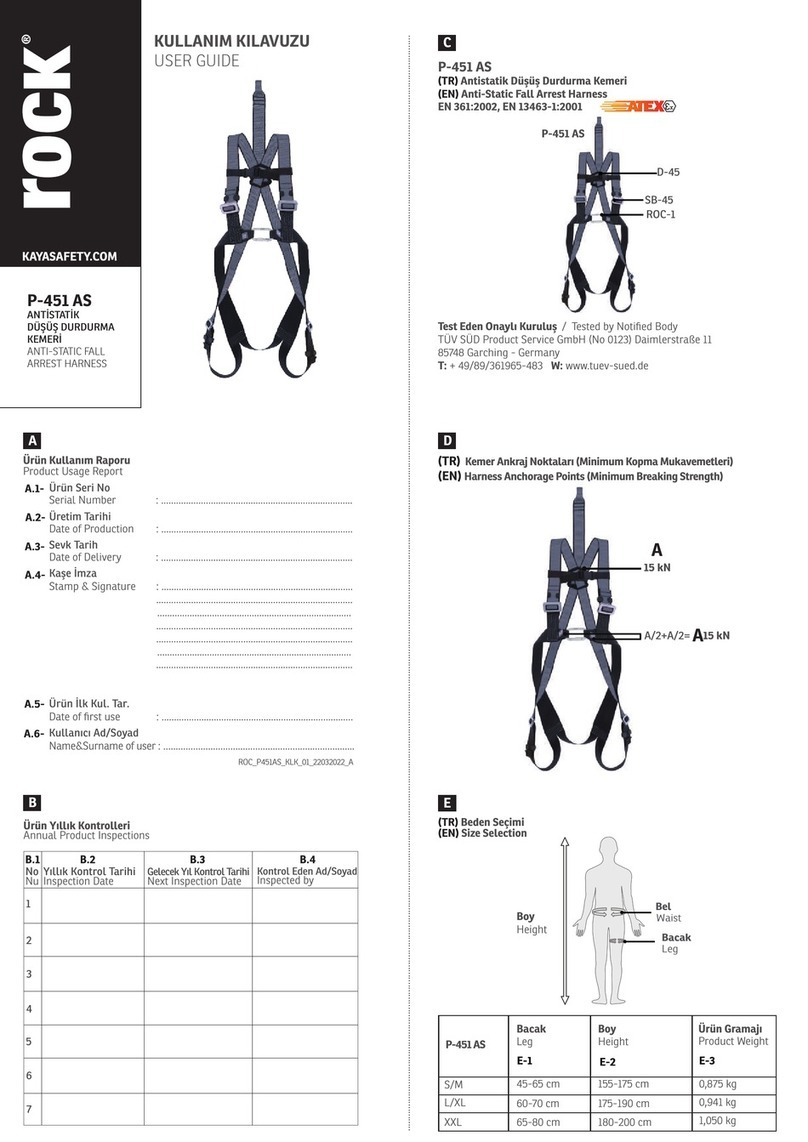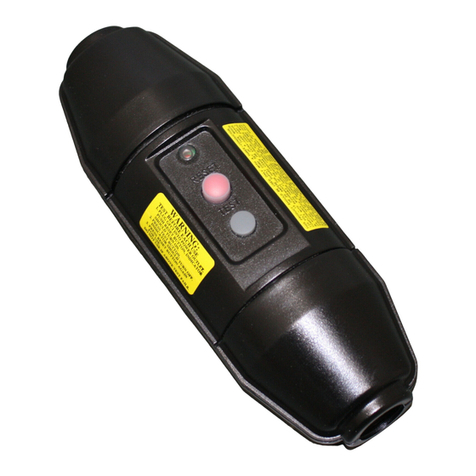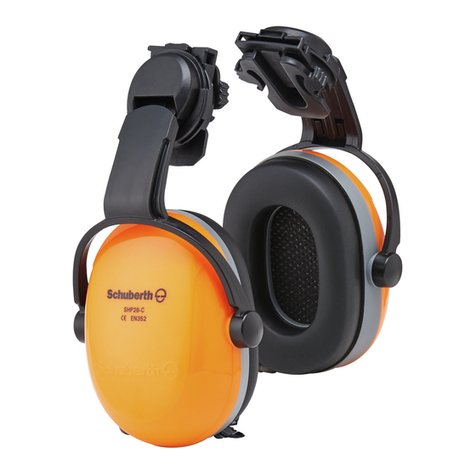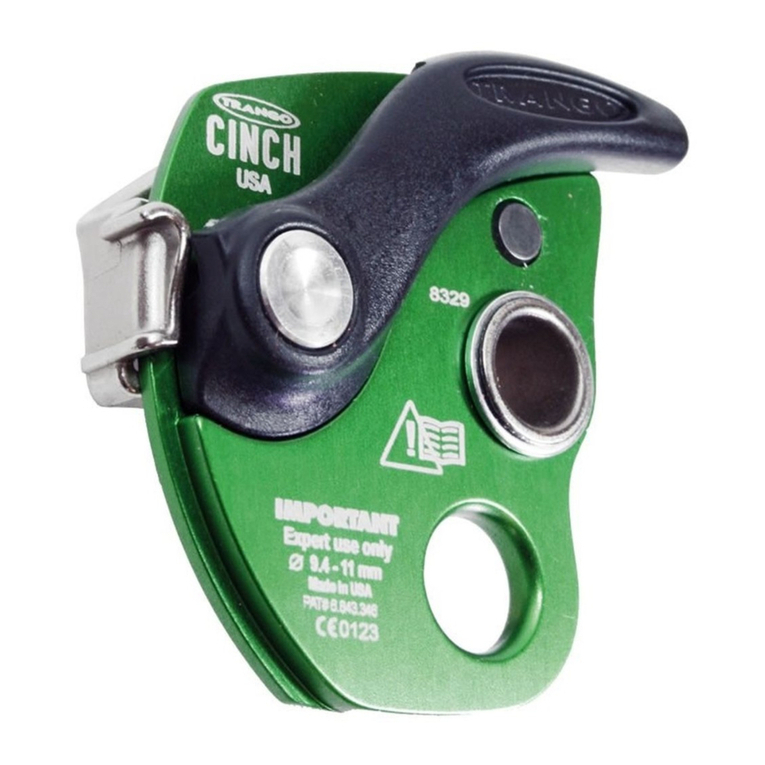
7
2 Caution
a) The AVANTI Fall Protection System (hereafter named as FPS) shall
only be operated by users trained in daily inspection, use and work
at heights.
b) A user is trained on the correct usage of the AVANTI Fall Protection
System (FPS) and is familiar with the following standards: EN 353-1,
EN 363 and EN 365.
c) A certied technician has successfully participated in the AVANTI
Fall Protection course.
d) A certied technician is qualied personnel authorised by AVANTI to
perform installation, inspection and maintenance tasks.
e) The installation, maintenance and testing of the FPS may only be
performed by a certied technician.
f) Users are obliged to read and understand this User’s Manual.
g) A copy of the User’s Manual shall be handed out to the FPS users
and shall be available for reference.
h) If more than one person is trusted with one of the above tasks, the
employer shall appoint a supervisor in charge of operation.
i) If the FPS is re-sold outside the original country of destination,
the reseller shall provide instructions for use, for maintenance, for
periodic examination and for repair in the language of the country in
which the product is to be used.
j) The ladder system shall be capable of supporting 15 kN. This shall
be veried by calculations made by a qualied engineer or by static
load testing.
k) The FPS shall not be used by persons under the inuence of alcohol
or drugs that may jeopardise the safety.
l) The FPS shall not be used by persons affected by vertigo, heart or
lung disorders, or other known weakening diseases/conditions.
m) The FPS users shall be aware of the dangers of suspension trauma
should a fall occur.
n) Owner shall ensure that a rescue plan is in place and that the users
are familiar with it. The rescue plan shall deal with any emergencies
that could arise during ascent and descent with the FPS.
o) No warranty is provided against damage resulting from
reconstruction or modication of equipment or use of non-original
parts which are not approved by the manufacturer.
p) The runner shall be handed out and treated as a personal protection
equipment.
q) The weight of the user, excluding tools and equipment, shall not
be less than 40 kg. The weight of the user, including tools and
equipment, shall not exceed 136 kg.
r) The maximum number of multiple users in the ladder system is 3.
The fall arrester must be attached to no more than one personal
fall-arrest system.
s) In the rst two meters above the ground level, the user may not be
protected against hitting the ground if a fall occurs. Other additional
safeties shall be provided for this purpose.
t) Prior to the rst use of the FPS, a certied technician must inspect
and approve the complete FPS.
u) If oil, grease or the like has leaked onto the safety rail – wipe it off.
v) If oil, grease, chemicals or the like has leaked onto the shock
absorber or in any kind been in contact with the webbing, have an
AVANTI FPS certied technician replace the shock absorber.
w) The shock absorber has a limited life. Its date of expiration is printed
on the shock absorber label.
x) The operation temperature of the FPS is -30º / +60º Celsius.
y) The FPS shall only be used in connection with a full body harness
that is approved according to EN 361.
z) The FPS has been tested and approved according to
EN 353-1:2014+A1:2017.
aa) The type-examination of the FPS has been performed by: FORCE
Certication A/S, EC Notied Body 0200, Park Allé 345, DK-2605
Brøndby.
ab) The production control of the FPS is performed by the same notied
body.
ac) These instructions shall be kept together with the permanent
installed parts of the FPS (i.e. the rail system).
Owner shall verify the need for FPS inspections with the local
authority and comply with the standards specified.
ad) When working at heights, the user shall minimise both the risk of
potential falls and the potential fall distance.
ae) In order to avoid collisions with the ground or obstacles should
a fall occur, the user shall verify the free space required beneath
his/her actual position taking into account sharp edges, electrical
conductivity and pendulum falls.
af) The safety of the users depends upon the continued efciency and
durability of the FPS. Thus, regular periodic inspections shall be
carried out, minimum every 12 months.
ag) All the FPS parts have been especially developed and tested for
AVANTI´s FPS. Thus, they shall not be used as part of other Fall
Protection Systems.











